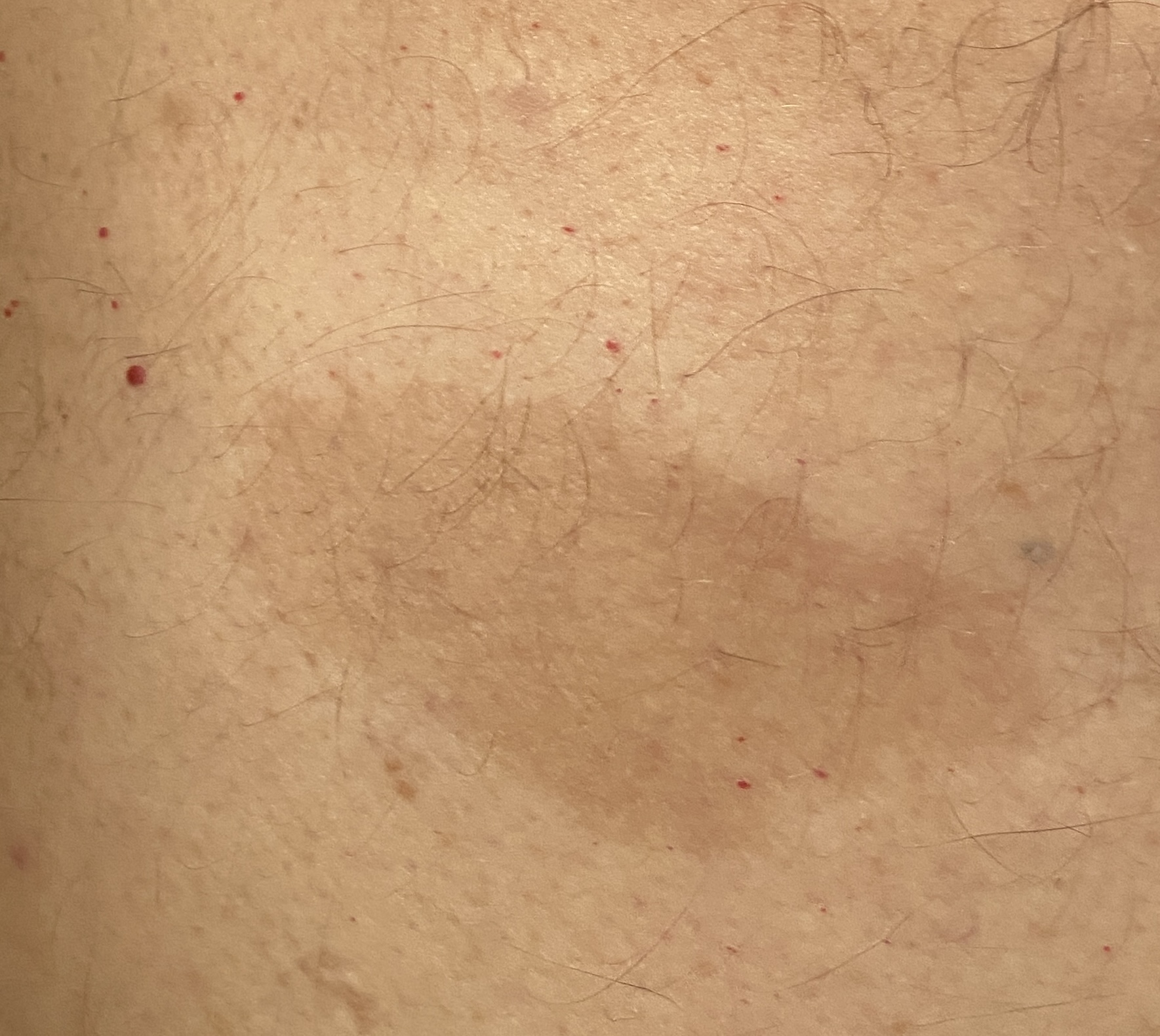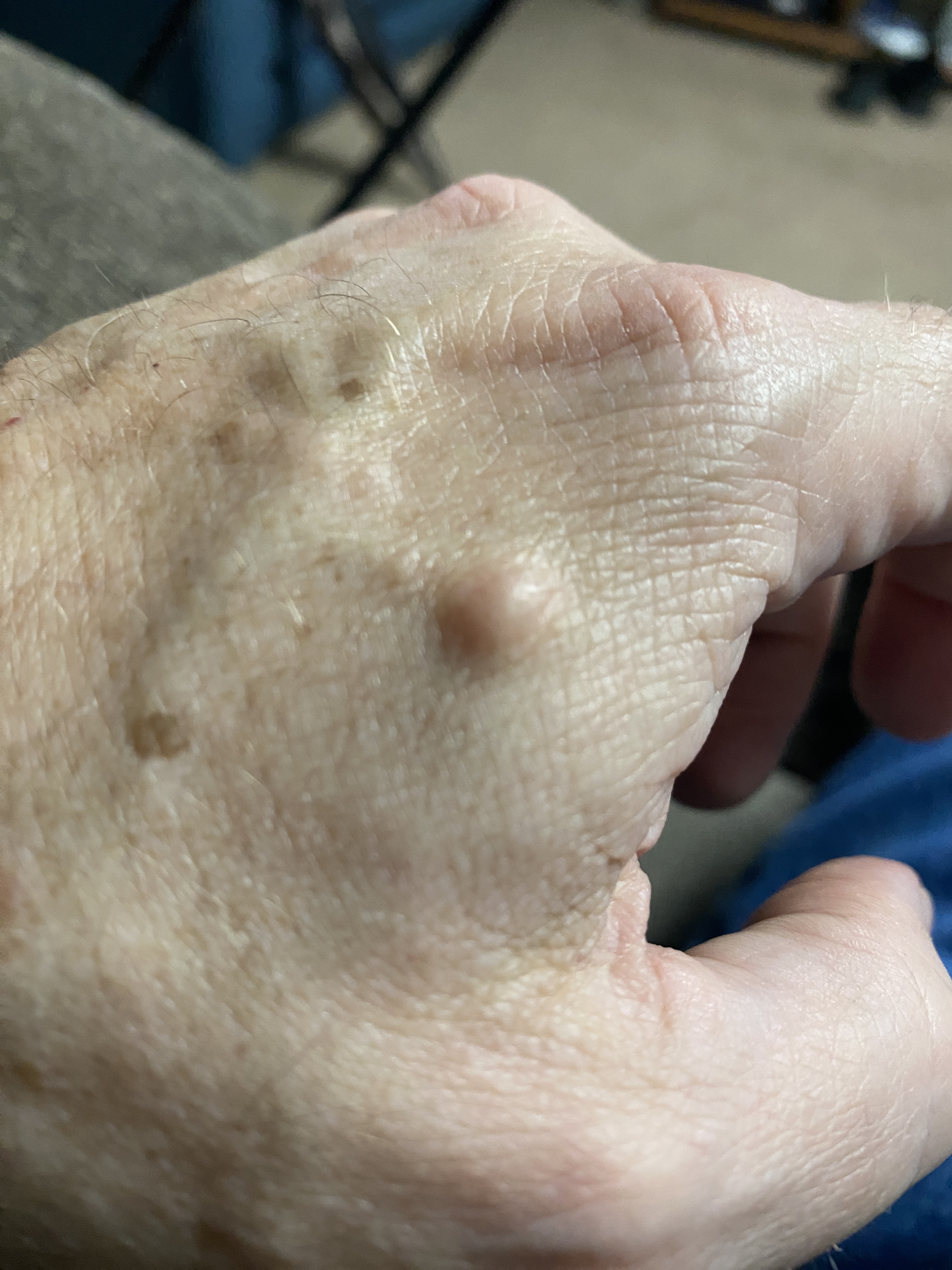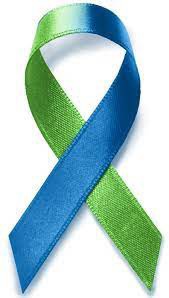Neurofibromatosis is a genetic disorder that affects the development and growth of nerve tissue. #Neurofibromatosis #NF1 #NF2
Neurofibromatosis
It is a condition that can affect various parts of the body, including the skin, nerves, bones, and brain. There are three types of neurofibromatosis, with each type varying in severity and symptoms. In this article, we will discuss the types, causes, symptoms, diagnosis, and treatment of neurofibromatosis.
Types of Neurofibromatosis:
There are three types of neurofibromatosis, namely:
- Neurofibromatosis Type 1 (NF1):
NF1, or Neurofibromatosis Type 1, is the more common type of neurofibromatosis, accounting for about 90% of cases. It is caused by a mutation in the NF1 gene, which is responsible for producing a protein that helps control cell growth. This mutation leads to the growth of non-cancerous tumors on nerves throughout the body, including the skin, bones, and organs. Other symptoms of NF1 may include cafe-au-lait spots (light brown patches on the skin), freckling in the armpits or groin, and skeletal abnormalities.
Neurofibromatosis Type 1 (NF1) is the most common type of neurofibromatosis, accounting for approximately 90% of all cases. NF1 affects about 1 in every 3,000 people worldwide. This type of neurofibromatosis causes the growth of non-cancerous tumors, also known as neurofibromas, on the nerves that connect the brain and spinal cord to other parts of the body. These tumors can grow anywhere in the body, including the skin, bones, and organs. Other symptoms of NF1 include café-au-lait spots (light brown patches on the skin), freckling in the armpits or groin, and skeletal abnormalities.
Neurofibromatosis type 1 (NF1), also known as von Recklinghausen’s disease, is a genetic disorder that affects the growth and development of nerve tissue. It is caused by mutations in the NF1 gene, which produces a protein called neurofibromin that helps regulate cell growth and division.
NF1 is a relatively common disorder, affecting approximately 1 in 3,000 to 4,000 people worldwide. It can affect both sexes and all ethnic groups equally.
The hallmark of NF1 is the development of non-cancerous tumors called neurofibromas on or under the skin, along nerves, and in other organs. These tumors can cause disfigurement and pain, especially if they grow near sensitive structures such as the eyes or spinal cord. Other characteristic features of NF1 include brownish spots on the skin called cafe-au-lait macules, freckling in the armpits or groin, and bone deformities such as scoliosis or bowing of the legs.
In addition to the physical symptoms, NF1 can also lead to cognitive and behavioral problems, including learning disabilities, attention deficit hyperactivity disorder (ADHD), and social and emotional difficulties. Individuals with NF1 may
- Neurofibromatosis Type 2 (NF2):
NF2, or Neurofibromatosis Type 2, is a less common type of neurofibromatosis, accounting for about 5% of cases. It is caused by a mutation in the NF2 gene, which produces a protein that helps regulate cell growth and division. This mutation leads to the growth of non-cancerous tumors on the nerves that control hearing and balance, known as vestibular schwannomas or acoustic neuromas. Other symptoms of NF2 may include ringing in the ears, hearing loss, and problems with balance and coordination.
Neurofibromatosis Type 2 (NF2) is a rare type of neurofibromatosis that affects approximately 1 in every 25,000 people worldwide. NF2 causes the growth of tumors on the nerves that control hearing and balance. These tumors are known as vestibular schwannomas or acoustic neuromas. Other symptoms of NF2 include ringing in the ears, hearing loss, and problems with balance and coordination.
Neurofibromatosis type 2 (NF2) is a rare genetic disorder that affects the growth and development of nerve tissue. It is caused by mutations in the NF2 gene, which produces a protein called merlin that helps regulate cell growth and division.
NF2 is much less common than NF1, affecting approximately 1 in 25,000 people worldwide. It can affect both sexes and all ethnic groups equally.
The hallmark of NF2 is the development of non-cancerous tumors called schwannomas on the nerves that control hearing and balance, known as vestibular schwannomas or acoustic neuromas. These tumors can cause hearing loss, ringing in the ears (tinnitus), and problems with balance and coordination. Other tumors that can develop in NF2 include meningiomas, which are tumors that form in the membranes that cover the brain and spinal cord, and ependymomas, which are tumors that develop in the cells that line the fluid-filled spaces in the brain and spinal cord.
In addition to the physical symptoms, NF2 can also lead to cognitive and behavioral problems, including learning disabilities, attention deficit hyperactivity disorder (ADHD), and social and emotional difficulties.
Diagnosis of NF2 typically involves a physical examination, medical history, and imaging tests such as magnetic resonance imaging (MRI) to detect tumors. Genetic testing may also be done to confirm the diagnosis and to identify the specific NF2 gene mutation involved.
There is currently no cure for NF2, but treatment options are available to manage symptoms and reduce the growth of tumors. These may include surgery to remove tumors, radiation therapy, or medications to control symptoms such as pain or seizures. Genetic counseling may also be recommended for affected individuals and their families, as NF2 can be inherited in an autosomal dominant pattern.
- Schwannomatosis:
Schwannomatosis is the rarest type of neurofibromatosis, affecting approximately 1 in every 40,000 people worldwide. This type of neurofibromatosis causes the growth of multiple schwannomas, which are non-cancerous tumors that grow on the nerves. Unlike NF1 and NF2, schwannomatosis does not cause café-au-lait spots or neurofibromas.
Schwannomatosis is a rare genetic disorder that affects the peripheral nerves, which are the nerves outside of the brain and spinal cord. It is caused by mutations in genes that control cell growth and division, leading to the growth of non-cancerous tumors called schwannomas. These tumors develop in the Schwann cells, which are the cells that surround and insulate nerve fibers.
Schwannomatosis is the rarest type of neurofibromatosis, accounting for less than 5% of cases. It typically affects adults, with symptoms usually appearing in the third or fourth decade of life. Unlike the other types of neurofibromatosis, schwannomatosis does not cause cafe-au-lait spots or neurofibromas.
The most common symptom of schwannomatosis is chronic pain, which can be severe and debilitating. The pain is often caused by the growth of schwannomas in the peripheral nerves and can be felt in the affected areas of the body, such as the arms, legs, back, or neck. Other symptoms may include numbness, tingling, or weakness in the affected areas, as well as muscle wasting or difficulty with motor skills.
Diagnosis of schwannomatosis typically involves a physical examination, medical history, and imaging tests such as magnetic resonance imaging (MRI). Genetic testing may also be done to confirm the diagnosis and to identify the specific genes involved.
There is no cure for schwannomatosis, but treatment options are available to manage symptoms and reduce the growth of schwannomas. These may include pain management techniques, physical therapy, or surgery to remove the tumors. Genetic counseling may also be recommended for affected individuals and their families, as schwannomatosis can be inherited in an autosomal dominant pattern.
Causes of Neurofibromatosis:
Neurofibromatosis is caused by mutations in the genes that control cell growth and division. These mutations can be inherited from a parent or can occur spontaneously. In most cases, neurofibromatosis is inherited in an autosomal dominant pattern, which means that a person only needs to inherit one copy of the mutated gene to develop the condition. However, in some cases, neurofibromatosis can occur due to spontaneous mutations that happen during the development of the fetus.
Symptoms of Neurofibromatosis:
The symptoms of neurofibromatosis vary depending on the type of neurofibromatosis and the severity of the condition. Some of the common symptoms of neurofibromatosis include:
- Non-cancerous tumors on the nerves
- Café-au-lait spots
- Freckling in the armpits or groin
- Skeletal abnormalities
- Vision problems
- Headaches
- Seizures
- Hearing loss
- Problems with balance and coordination
- Speech problems
- Learning disabilities
Cafe au lait spots explained

Cafe-au-lait spots (CALs) are a common physical feature seen in some individuals with neurofibromatosis type 1 (NF1). They are flat, light brown or tan-colored patches on the skin that are generally oval or circular in shape. The color of the spots is similar to that of coffee with milk, which is where the term “cafe-au-lait” comes from.
CALs are not exclusive to NF1 and can be found in individuals without the condition as well. However, the presence of six or more cafe-au-lait spots larger than 5 mm in diameter in prepubertal individuals or larger than 15 mm in diameter in postpubertal individuals is one of the diagnostic criteria for NF1.
Cafe-au-lait spots are caused by an overproduction of melanin, which is the pigment that gives color to the skin. The development of CALs is thought to be related to the mutation in the NF1 gene that causes NF1, but the exact mechanism is not fully understood.
CALs usually appear in early childhood and tend to increase in size and number during puberty. They can be found anywhere on the body and are usually harmless. However, their presence may cause emotional distress, especially if they are prominent or numerous.
While cafe-au-lait spots are not harmful in themselves, their presence may be a sign of an underlying medical condition such as NF1. It is important to consult a healthcare professional if you or your child has multiple CALs, especially if there are other symptoms or signs of NF1. A healthcare professional can perform a physical examination, review your medical history, and order appropriate tests to determine the cause of the CALs.
NF tumors explained

NF tumors refer to the tumors that develop in individuals with neurofibromatosis (NF) types 1, 2, and schwannomatosis. These tumors are generally benign (non-cancerous), although they can cause significant health problems depending on their location and size.
In NF1, tumors called neurofibromas develop in the nerves, skin, and other tissues throughout the body. These tumors can vary in size and may be single or multiple. They are made up of cells called Schwann cells and fibroblasts, which produce the extracellular matrix that surrounds and supports the cells. Neurofibromas can cause symptoms such as pain, numbness, and weakness, and may lead to disfigurement or disability.
In NF2, tumors called schwannomas primarily develop in the nerves that control hearing and balance, known as vestibular schwannomas or acoustic neuromas. These tumors can cause hearing loss, ringing in the ears (tinnitus), and problems with balance and coordination. Other tumors that can develop in NF2 include meningiomas, which are tumors that form in the membranes that cover the brain and spinal cord, and ependymomas, which are tumors that develop in the cells that line the fluid-filled spaces in the brain and spinal cord.
In schwannomatosis, schwannomas develop in multiple nerves throughout the body, but typically do not involve the vestibular nerve. The tumors can cause pain, weakness, and numbness, and may require surgery to manage symptoms.
The development of NF tumors is thought to be related to the mutations in genes that regulate cell growth and division. In NF1 and schwannomatosis, the mutations affect the NF1 gene and SMARCB1, LZTR1, and/or INI1 genes, respectively. In NF2, the mutations affect the NF2 gene. These genes produce proteins that help regulate cell growth and division, and mutations in these genes can lead to uncontrolled growth of cells and the development of tumors.
The treatment of NF tumors depends on their location and size, as well as the symptoms they cause. Treatment options may include surgery, radiation therapy, or medications to manage symptoms such as pain or seizures. Close monitoring of the tumors is also important to detect any changes in size or growth patterns.
Diagnosis of Neurofibromatosis:
The diagnosis of neurofibromatosis is usually based on a physical examination, medical history, and genetic testing. A doctor may perform a physical examination to look for symptoms such as café-au-lait spots, neurofibromas, or other tumors. Genetic testing may also be done to confirm the diagnosis of neurofibromatosis and to identify the specific type.

The following are the colors and their meanings for NF awareness:
- Green and blue: These two colors are commonly used together to represent neurofibromatosis awareness. Green represents the nervous system, while blue represents the connective tissues that are affected by NF.
- Blue and gray: Blue and gray are also used to represent NF awareness. Blue represents the nerves and gray represents the tumors that grow on them.
- Burgundy and gold: These colors are used by the Children’s Tumor Foundation, the largest non-governmental organization in the world dedicated to NF research, education, and advocacy. Burgundy represents the blood vessels, and gold represents the hope for a cure.
- Zebra print: Zebra print is used by some individuals and organizations to represent NF awareness. This is because NF is a rare disorder, and people with NF are often called medical “zebras” because they are unique and rare, like the striped animal.
The use of awareness ribbons and colors helps to raise awareness about NF and the challenges faced by those living with the condition. Wearing or displaying these colors can help to start conversations about NF and encourage support and understanding for those affected by it.
Neurofibromatosis (NF) Awareness Month and Day
NF Awareness Month is observed in May every year. In 2023, NF Awareness Month will be in May as well.
In addition to NF Awareness Month, World NF Awareness Day is observed on May 17th every year to raise awareness about neurofibromatosis (NF) and support those affected by this rare genetic disorder.
NF Posts of Interests
- World NF Awareness Day & Month (Held in May of each year)
- End NF Car
I am not a doctor. I am one who has an NF1. My mom and my uncle, her brother and his kids all have neurofibromatosis they all have it worse than I do at this time. I just used chatGPT to generated this article.
Check out Courageous Christian Father’s Wish list on Amazon where you can purchase and this items sent directly to him and they will be used for the ministry.
Subscribe To Courageous Christian Father!
Don’t miss any blog posts! Subscribe today! You can subscribe via WordPress or by entering your email! Thank you!
Follow Courageous Christian Father on WordPress.comFollow Courageous Christian Father on Social Media
Recent Posts:
Below are some examples of blog entries from all the blogs that I do. (Courageous Christian Father, Steve Sews Stuff, SteveZ DuckZ, and SteveZ DesignZ).
Thank You For Reading Courageous Christian Father!
Thank you for reading. Please feel free to share and like this blog post.
Clipart: Unsplash, Pixabay, Pexels, Openverse, Adobe Express, Adobe Stock, FreePik, MetroCreative, and more. This site uses Amazon Affiliate Ads & Google Ads.
About the Author
Discover more from Courageous Christian Father
Subscribe to get the latest posts sent to your email.

One thought on “Neurofibromatosis”